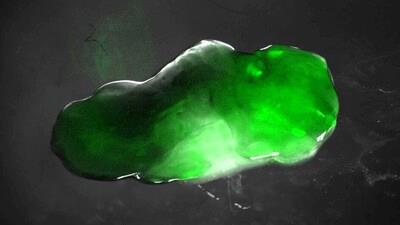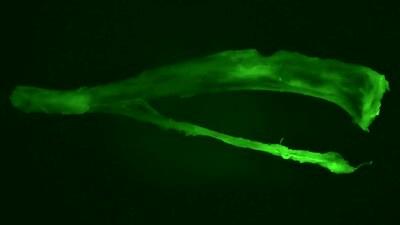(MENAFN- PR Newswire)
COLD SPRING HARBOR, N.Y., Sept. 25, 2024 /PRNewswire/ -- Metastatic cancer can be a devastating diagnosis. The cancer is spreading. It may travel to multiple organs in the body. This could mean more pain and ultimately, death.
Unfortunately, just how cancer spreads remains unclear. But now, Cold Spring Harbor Laboratory (CSHL) Professor Adam Siepel
and colleagues have a way to better understand that process. New technology developed at Weill Cornell medicine barcodes cells to track the highways by which prostate cancer spreads throughout the body.
Continue Reading

Genetic barcoding illuminates overlaps between the primary tumor sites-in the prostate, seen here-and the organs and tissues to which the cancer spreads. Image: Ryan Serio, Nowak lab/Weill Cornell Medicine

Bioluminescence imaging allowed for individual cancer cells to be isolated in the tibia, as seen here. Image: Ryan Serio, Nowak lab/Weill Cornell Medicine
The resulting roadmap shows that most cancer cells actually stay put within the tumor. However, it also reveals that a small number of aggressive cells seed cancer's rare migrations from the prostate to the bones, liver, lungs, and lymph nodes.
The discovery was made in collaboration with Dawid Nowak's laboratory at Weill Cornell Medicine. It involved using a new mouse model called Evolution in Cancer Prostate (EvoCaP) along with an analysis pipeline known as Evolutionary Lineage Tracing in R (EvoTraceR). This allowed scientists to use short sequences of DNA that act as genetic barcodes to trace the movement of individual cancer cells.
The new technology offers a big step up from previous methods, says Siepel. In the past, researchers might have used a combination of imaging techniques and whole-genome sequencing. But that meant more time and money. Plus, it didn't necessarily ensure more accurate readings. On the other hand, Siepel says:
"This barcoding lets us read off the precise tracing information about how the cancer has spread from its origin to the tissues to which it's metastasized."
The readout provides researchers with a clearer picture of how cancer spreads. And that newfound clarity could set the stage for further advances. CSHL postdoc Armin Scheben
explains:
"We've laid the fundamental molecular biology foundation for a whole lot of other questions to be answered. This is the beginning phase of a much larger project where our colleagues are expanding this work to other types of cancer, and we start looking at therapeutic interventions for metastasis."
If they're successful, it could lead to new, more targeted therapeutics. There's a long road ahead, but one day, mapping cancer's spread could mean stopping it in its tracks.
About Cold Spring Harbor Laboratory
Founded in 1890, Cold Spring Harbor Laboratory has shaped contemporary biomedical research and education with programs in cancer, neuroscience, plant biology and quantitative biology. Home to eight Nobel Prize winners, the private, not-for-profit Laboratory employs 1,000 people including 600 scientists, students and technicians. For more information, visit
SOURCE Cold Spring Harbor Laboratory
WANT YOUR COMPANY'S NEWS FEATURED ON PRNEWSWIRE?
440k+
Newsrooms &
Influencers
9k+
Digital Media
Outlets
270k+
Journalists
Opted In
GET STARTED
MENAFN25092024003732001241ID1108713516
Legal Disclaimer:
MENAFN provides the information “as is” without warranty of any kind. We do not accept any responsibility or liability for the accuracy, content, images, videos, licenses, completeness, legality, or reliability of the information contained in this article. If you have any complaints or copyright issues related to this article, kindly contact the provider above.